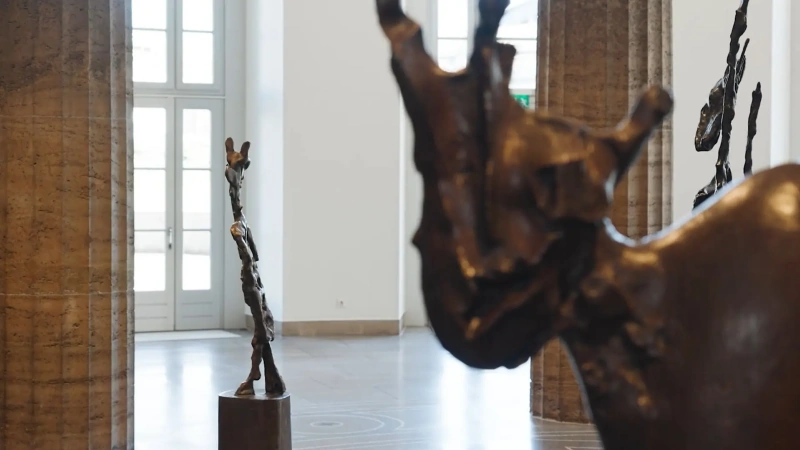Studied at art school in Leeds, Yorkshire and at the Royal College of art in London. Since 1930 has become one of the most significant and influential figures in English art, and by 1940, has achieved worldwide recognition. His favorite subject was the female figure, although inspired by primitive art and love of landscape, he was completely indifferent to anatomical accuracy.
Moore was born 30 July 1898 in Castleford (Yorkshire). After the First world war he studied in Art College in Leeds and the Royal College of art in London, where he taught from 1924 to 1932; he left the College only once for travel to Italy. Moore was always interested in sculpture of Ancient Greece, Etruscan and Mayan. Under the influence of this passion, as well as ideas of "correctness" expressed by the critic Roger fry, he turned to the creation of stressed material forms, symbolizing earthly origins. Based on them, built his sculptures, which are dominated by female figures and compositions on the theme of family and motherhood. At first his work was close enough to real objects, and later acquired the abstract.
For the Church of SV. Matthew in Northampton he created in 1943-1944 the statue of the Madonna and child. One-man exhibition at the Museum of modern art in new York brought him fame as one of the best artists of the XX century. In 1948 at the Venice Biennale he won the international prize, and in 1953 — the same prize at the Biennale in Sao Paulo. Among his numerous works — sculpture for the building of the magazine "the times" in London, for the building of UNESCO in Paris, Bank Lambert in Brussels and Lincolnesque center in new York.
Astounding artistic integrity of his works has no parallel in the history of sculpture. Forms smoothly and seamlessly flow into each other, sometimes forming the recess and the gaping emptiness, the "hole". However, Moore has never dealt with problems of pure form, he was interested in the images, reminiscent of natural forms: the ancient stones, hewn by the elements over many centuries; mountain caves, underground streams, washed; embryos in the womb; the human body as a holistic organic system.
The artistic image represents the master as originally existing in the material and only waiting until he would free the cutter of the sculptor. Moore created his compositions from wood, stone, bronze, concrete and terracotta, and also carried out a number of works in wood and lead, part of which was sealed tight like strings or brass wire. In the style of his watercolors and pen drawings were the embodiment of increased susceptibility to the reality of reality, but even in the compositions in the years of the Second world war in the London underground during the German air raids, the main focus was on the identification of the most significant, generalized forms of the human body, and the emotions and personality patterns play a secondary role.
In 1984, in honor of the 750th anniversary of Berlin Henry Moore created the sculpture "Large divided oval: Butterfly" (cast in the foundry of Hermann Noaca), which in 1987 was installed in front of the Berlin House of world cultures, which then served as the Convention center.
Moore died at his home near MAh-Hadham (Hertfordshire) on August 31, 1986.
-
Artworks liked by6 users
- Artworks in 1 collection and 3 selections






